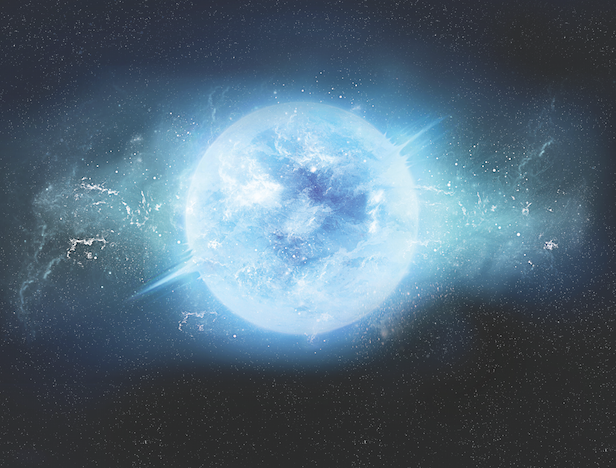Astronomers have successfully
managed to estimate the internal composition of a white dwarf. White Dwarfs are
considered as one of the possible end products of stellar evolution, finding a
heavier core with more oxygen than previous models suggested. This might have
very important consequences for many different areas of astrophysics.
The new study, published in
Nature, discusses the interior of KIC08626021, which is located 1,375
light-years from Earth. It is roughly the size of our planet but has a mass
equivalent to almost 60 percent of the Sun. This research is big deal and
reveals lots of hidden secrets about White Dwarfs.
The star pulsates and by
studying this pulsation researchers were able to work out how elements are
distributed within the object, as well as their quantities. The team estimated
that the central core has 40 percent more mass and 15 percent more oxygen than
expected.
"We were able to map
the interior of a pulsating white dwarf star with precision, as if we'd sliced
it into cross-sections to study its composition," lead author Dr Noemi
Giammichele, from the University of Toulouse, France, said in a statement.
White dwarfs are the stellar
core remnants of stars that are not massive enough to become supernovae, a
category including 97 percent of the stars in the Milky Way. They are no longer
fusing atoms at their core and their energy comes from electrons pushing
against gravitational collapse. White dwarfs experience a hot period to begin
with and then slowly cool down.
But some “lucky” white
dwarfs can aspire to more spectacular deaths. If they have a companion and
manage to steal enough material from it, they can end by collapsing into a
supernova. This specific kind of supernova, known as Type Ia, is used in cosmology
to estimate distances. Hence why tweaks to models might have far-reaching
ramifications.
White Dwarfs have remained a
great mystery to astronomers but now it is changing.
"This is a major
discovery that will force us to re-evaluate our view of how stars die,"
co-author Professor Gilles Fontaine, from the University of Montreal,
explained. "That said, more work must be done to confirm whether this
observation holds true for other stars. It may just be an anomaly."
"We must try to
reproduce these results with other celestial bodies before we can make any
conclusions," Giammichele agreed. The data were obtained with the
planet-hunting Kepler space telescope. Since its observations of KIC08626021,
it has discovered about 60 more pulsating white dwarfs.
"I have enough data to
spend the next 20 years analyzing them one by one," Giammichele added. Studying
the interior of a star using its pulsation is a technique known as
asteroseismology. It has been previously used to study the interior of other
stars, like the Sun and red giants.
This article was initially published on IFLScience. You
can read the article here.




